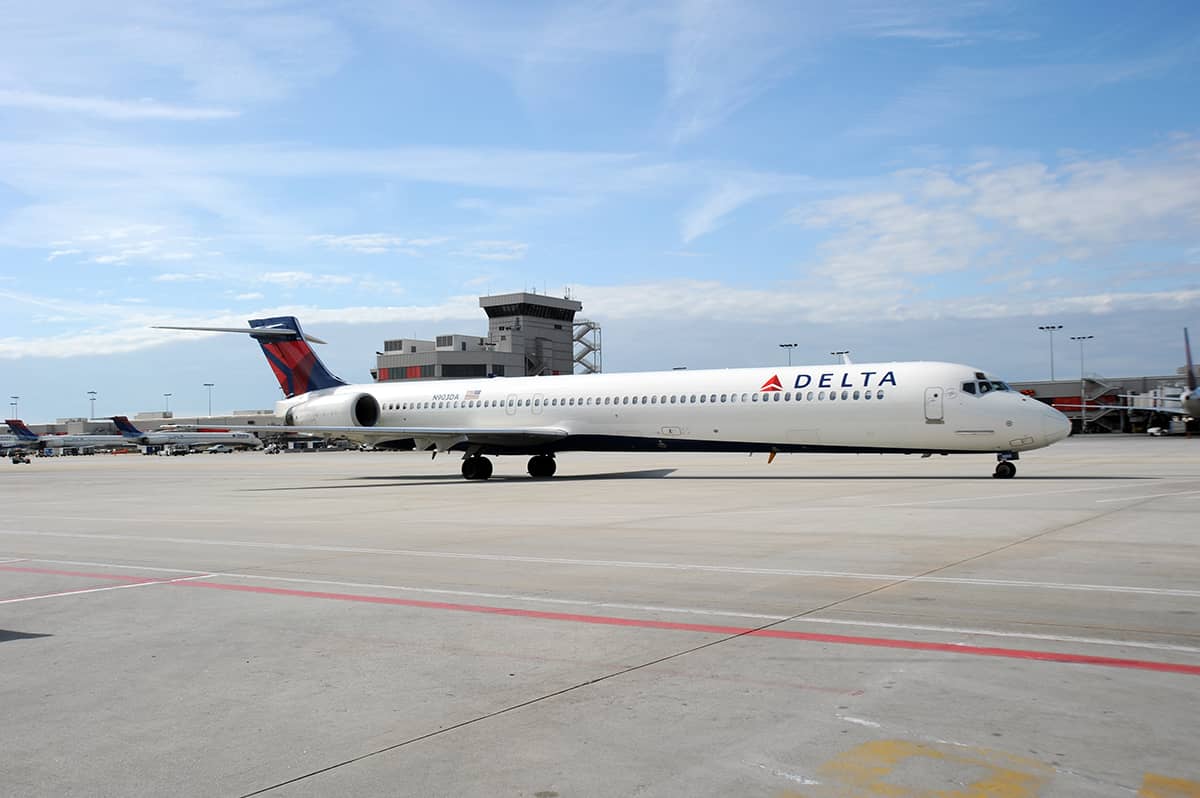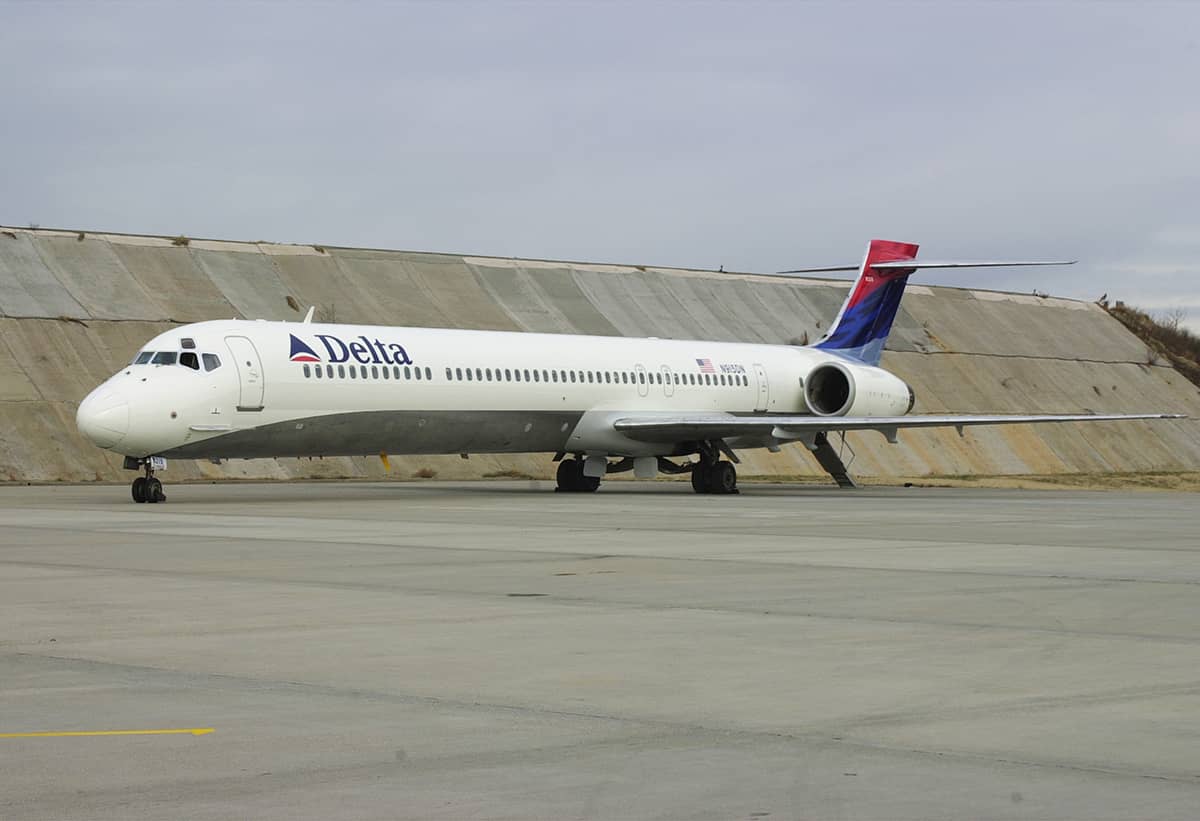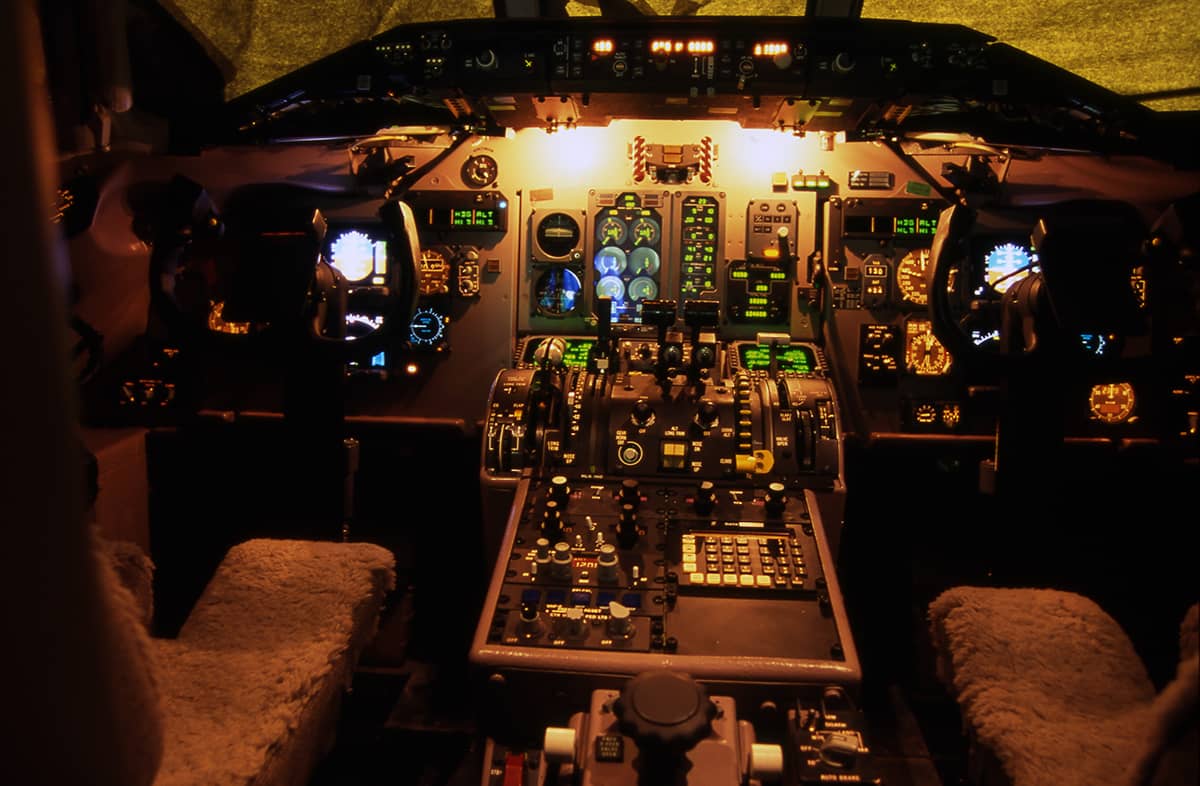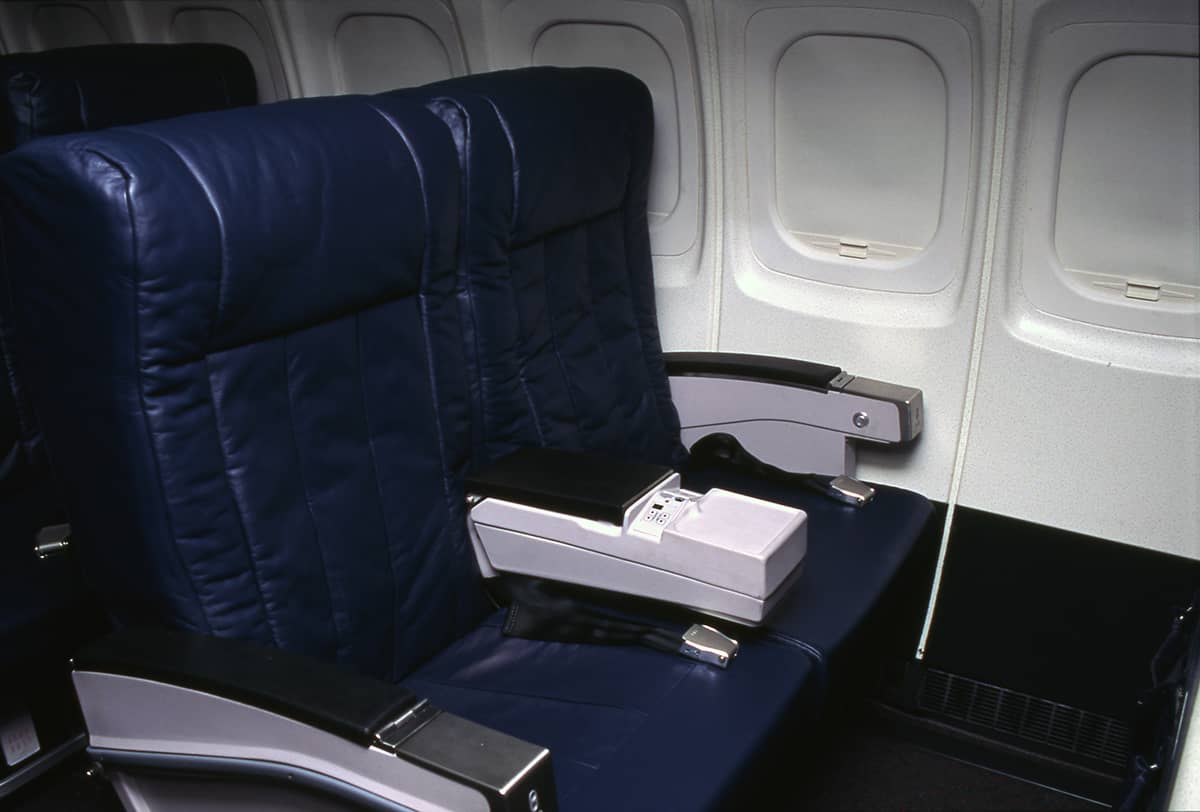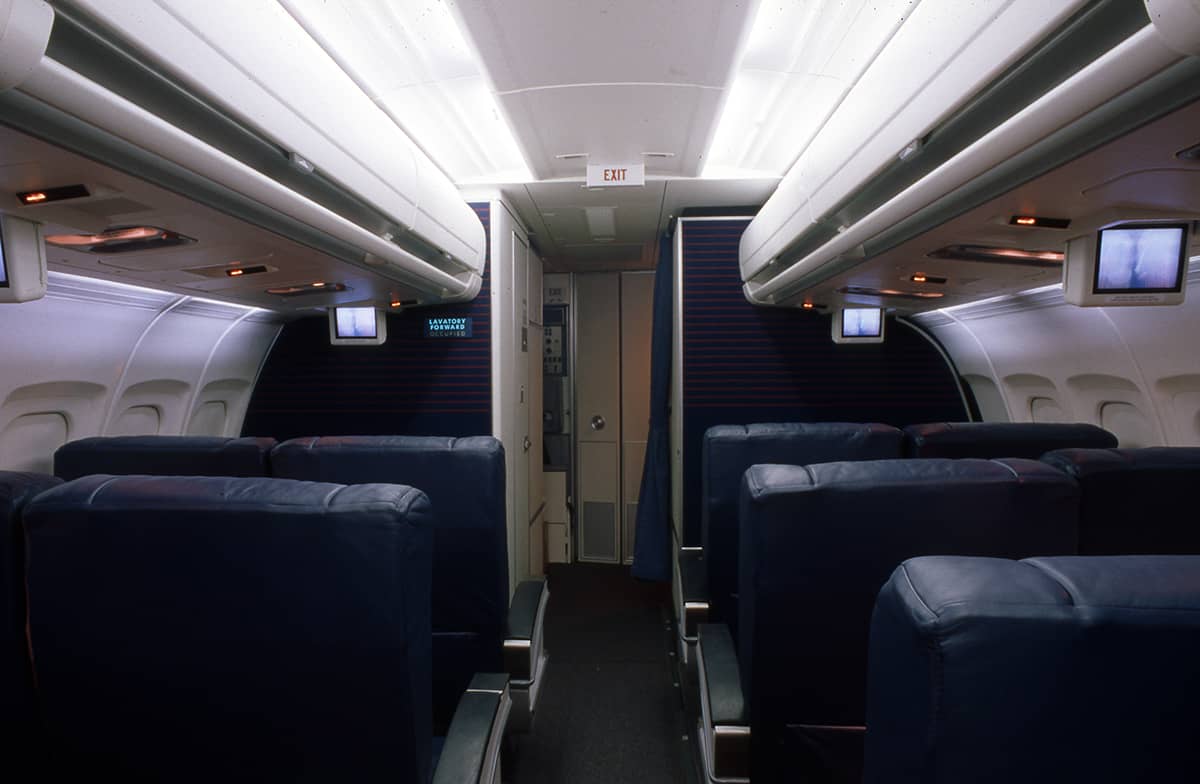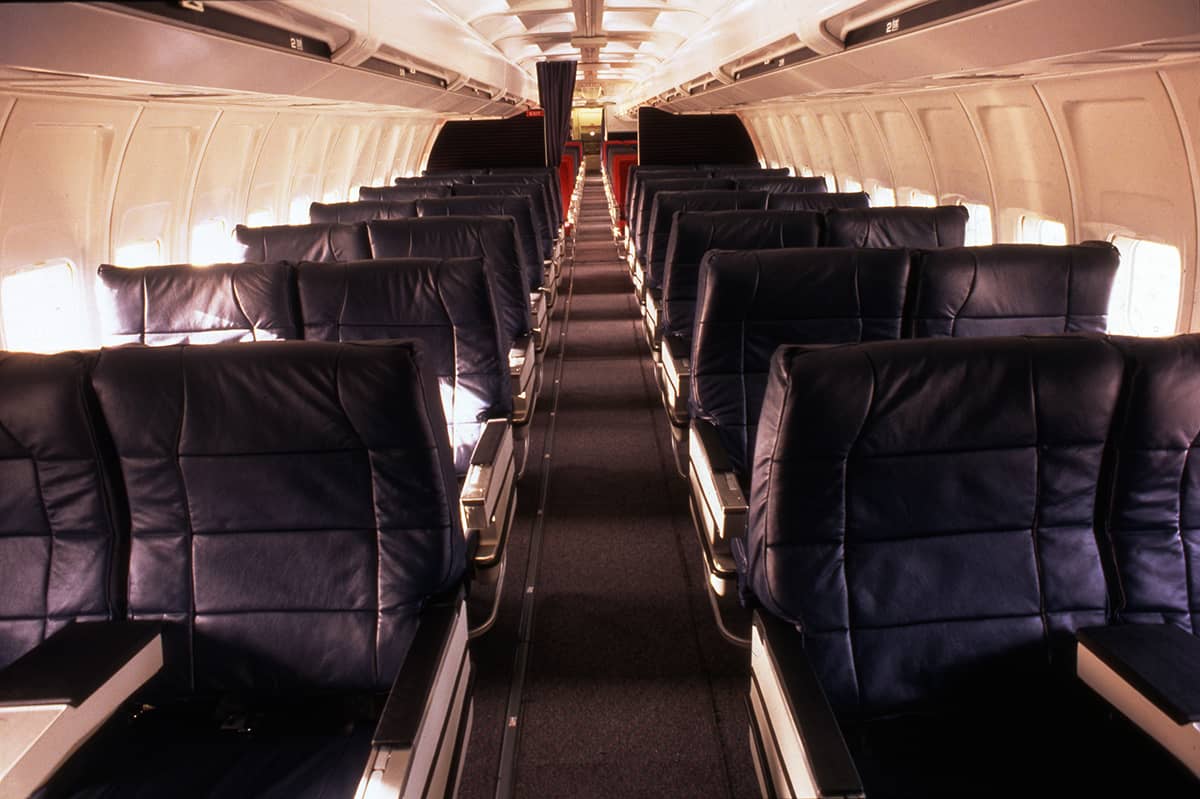Technical Advances
"The MD-90 will improve our cost performance by saving fuel and carrying larger loads while minimizing environmental impact through less noise and reduced emissions."
Russ Heil, Delta senior vice president of technical operations, March 1995.
In the midst of a difficult economic period, Delta welcomed the MD-90's cost efficiency, estimating that the airlines' annual fuel usage could drop by hundreds of thousands of gallons per aircraft, compared to the MD-88. Pilot training costs were minimized due to the MD-90's similarity to the MD-88. The engines, designed to reduce noise levels, made the MD-90 "one of the quietest aircraft ever built" in its class in 1995.
A thrust rating panel in the flight deck allowed pilots to choose from 25,000 pounds of thrust to 28,000 pounds, depending on the circumstances of each flight. Reduced thrust choices below 25,000 pounds were also available. The thrust rating panel allowed the option to make the flight more economical or use more power for high altitude airports—the less power used the longer the engines would last between overhauls.
The MD-90 offered Delta flexibility to provide passenger and cargo services in a wide variety of operating environments. "The MD-90 performs exceptionally well at hot and high-altitude airports, making it possible for us to schedule this aircraft for operations throughout North America—for short-haul and longer routes," remarked Russ Heil, senior vice president of technical operations. "That flexibility is crucial in an ever-changing industry."
